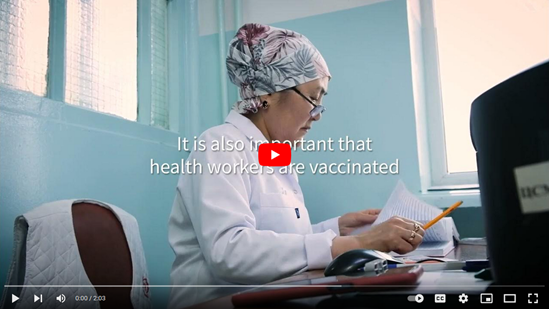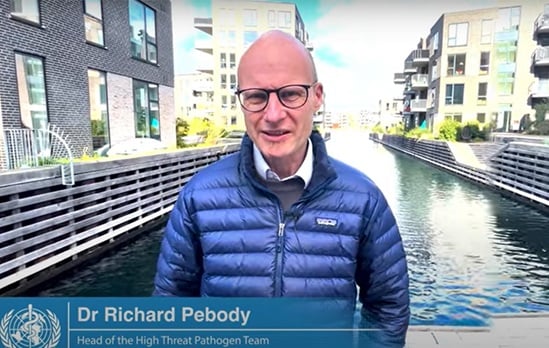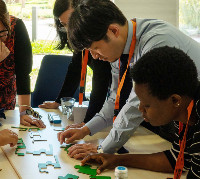The annual Pandemic Influenza Preparedness (PIP) Partnership Contribution (PC) is provided by influenza vaccine, diagnostic and pharmaceutical manufacturers using the Global Influenza Surveillance and Response System (GISRS). These funds are used to strengthen
pandemic preparedness in the following 5 key areas.
Laboratory and Surveillance
Through 2016, the majority of PIP Framework funds for preparedness will be used to strengthen laboratory and surveillance capacities in countries where such capacities are weak. This enables WHO/Europe to enhance its existing support to Member States
in this area of work.
Expected impact
The Laboratory and Surveillance activities will lead to improved:
- national capacities to detect, assess and respond to an influenza pandemic or outbreaks of severe acute respiratory infections (SARI) due to a novel virus;
- national capacities to monitor trends in circulating influenza viruses;
- global collaboration, through the sharing of information and viruses (epidemiological data from sentinel surveillance and PCR detection quality assurance).
Support for eligible Member States in the European Region
Armenia, Kyrgyzstan, Tajikistan, Turkmenistan, Ukraine and Uzbekistan will receive support in the area of Laboratory and Surveillance support through 2016.
WHO/Europe is working with these Member States to:
- increase the capacity of laboratories to detect influenza viruses and to share influenza viruses with WHO Collaborating Centres for Reference and Research on Influenza;
- achieve WHO recognition of National Influenza Centres in Armenia, Tajikistan, Turkmenistan and Uzbekistan;
- strengthen sentinel influenza surveillance for influenza-like illness and SARI;
- enhance national capacities to respond to outbreaks of respiratory infections;
- develop national clinical guidelines for treatment of SARI cases;
- enhance collaboration between stakeholders involved in influenza surveillance, and those involved in the animal and human influenza sectors.
Region-wide support
In addition to country-specific activities, the PIP Framework PC enables WHO/Europe to enhance its support to the Region-wide influenza surveillance network.
The main activities conducted for the network in 2014 were:
- a joint WHO/Europe and ECDC annual influenza surveillance meeting (11–13 June 2014 in Vienna, Austria);
- development and publication of a new joint WHO/Europe and ECDC influenza bulletin – FluNews Europe;
- laboratory training in genetic sequencing in collaboration with the Global Initiative for Sharing All Influenza Data (GISAID) and training in laboratory quality and biosafety.
Strengthening lab and surveillance capacities in PIP eligible countries
National work plans for the Laboratory and Surveillance component of the PIP Partnership Contribution Implementation Plan were agreed upon by the Ministries of Health of Armenia, Tajikistan, Turkmenistan and Uzbekistan following a high-level meeting between
the relevant ministries and WHO/Europe in July 2014. Activities were set out for the period 2014-2015.
Burden of disease
As of 2014, only few Member States of the European Region reach the WHO targets for seasonal influenza vaccine uptake in risk groups (including persons over the age of 65, pregnant women and health care workers). A better understanding of the
burden of influenza disease and the decision-making process could ultimately lead to increased seasonal influenza vaccination uptake and should expedite decisions around pandemic vaccines.
The main outcome of the PIP Framework related to the Burden of Disease component will be to provide national policy-makers with influenza disease burden data needed for informed decision-making and prioritization of health resources.
In the European Region, several Member States will be targeted for Burden of Disease activities. Among other activities, standardized tools for economic burden estimates will be applied to produce national estimates on the burden of influenza
disease.
In August 2014, national experts from 8 Member States in the European Region attended a workshop on how to estimate national disease burden associated with seasonal influenza and improve knowledge of recent developments in influenza vaccination.
Regulatory Capacity Building
The overall outcome for this Area of Work is to enable Member States with weak or no regulatory capacity to regulate influenza products, including vaccines, antivirals and diagnostics, and to accelerate national approval of these products in the event
of an influenza pandemic.
Rapid production and deployment of vaccines and antiviral medicines is critical to limit the potential impact of a pandemic on populations and essential services. During the 2009 influenza pandemic, some countries, especially those in the lowest income
range, experienced delayed access to vaccines or could only procure an insufficient number of doses.
Armenia and Georgia are the first Member States in the WHO European Region targeted for Regulatory Capacity Building under the PIP Partnership Contribution Implementation Plan 2013-2016.
As a first step, during a WHO mission in October 2014, the status of the national regulatory authority in Georgia was assessed using the WHO "Manual for assessment of the national regulatory system for vaccines". An updated institutional development
plan (IDP) will address regulatory gaps that were identified in relation to for influenza vaccines.
Risk Communications
The main outcome for this Area of Work is to strengthen Member States’ risk communications capacities with a special focus on pandemic influenza communications. Risk communication is also a fundamental capacity under the International Health Regulations
(2005).
Risk communications is essential in a pandemic. Ministries of health need the technical capacity and expertise to inform the public, for example about hand hygiene and other protective measures and specific risk groups, and to address public and health
worker vaccine safety concerns.
Risk communication activities within the PIP Framework began with 2 inter-country workshops held in 2014 for 9 Member States of eastern and south-eastern Europe and central Asia. The workshops focused on improving decision making, response time and the
quality of the response.
Planning for Deployment
The expected overall outcome for this Area of Work is that in the event of a pandemic, Member States will have updated plans in place to deploy pandemic supplies, including vaccines, antivirals and diagnostics.
Developing generic vaccine deployment strategies as part of national pandemic preparedness plans, performing regular training and strengthening cold-chain capacity in the inter-pandemic period are some of the activities that will reduce logistical challenges
during such a public health crisis.











